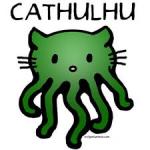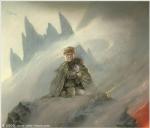 Puck, on 06 September 2013 - 11:49 AM, said:
Puck, on 06 September 2013 - 11:49 AM, said:
 Dolmen+, on 06 September 2013 - 06:21 AM, said:
Dolmen+, on 06 September 2013 - 06:21 AM, said:
Also back on topic: I think women are just as empowered by getting the option to wear either highly funtional and respectable clothing or highly alluring lack there of. It makes sense to demand functionality where life and limb is at risk. If you are hyper resillient physicaly i think you get to wear a boob window largely just because you can.
Agreed. I mean, which is more preferable? A character that may look like she means to be alluring but that acts like she knows what she's doing and is generally a well-built character? Or one that dresses functionally but is the typical damsel in distress that can't do anything herself? Of course, the middle way is probably the most sane one, but if I had to pick I'd go with the first option. Empowerment includes behaviour as much looks and I'm no fan of telling anyone how to dress because, duh, you're supposed to be empowered and stuff. Fictional characters are treading rather thin ice there sometimes, because they cannot act for themselves, so it depends on writers and artists to find the right balance between exploitation and empowerment. Removing the boob window does not change Power Girl's character, it just shows that some of those blogs about 'meh, boobs windows are evil' are starting to make an impact. The question for me is, how far will this go? We're talking about fictional icons here, most of whom are pretty much invincible, and I'm not sure that slapping more cloth on them will make things radically better. Again, I think empowerment lies more in behaviour and how a character is presented to the audience [like.. poses, speach, etc.]. But as usual, I seem to be rather alon with that.
I don't think you're alone there, though I do imagine it sometimes seems that way.
It probably sprawls out into a broader argument of how much fiction reflects, or affects, reality and empowerment, when fictional characters are inherently at the mercy of their writer, and therefore have no true empowerment no matter what it looks like; though obviously writers can also very much be at the mercy of their fans, or their imagination, or their publishers, etc. It really comes down to whether or not you think the
character design, from body type to facial features to outfit, to personality, has a viable impact on social mores; the argument goes that portraying famous characters in a limited range of attire that overtly focuses on their sexualisation is detrimental to the overall public perception of women and therefore needs to be rectified to give more respect to the subject.
Personally I'm on the fence here. While it falls into a similar category to me as violence in video games *causing* people to go postal in real life (i.e. correlation does not equal causation, what the fuck are you smoking?), as with video game violence I do admit that there is a certain amount of seep into the social unconscious, and probably more significant and insidious one, as the message reinforces existing social perspectives rather than going against them, and is on the whole pushing a far more subtle agenda than "go kill everyone naow"; the consequences are a lot less obviously negative and, er, illegal.
I think that it's a pretty complicated issue; you don't see men wearing underpants on the outside of their clothes just because Superman and Batman, arguably the most iconic and influential "super heroes" of all time, were doing it. Unfortunately that doesn't entirely hold water, as again the sexualisation thing is more a reinforcement and drive of existing social stereotypes. The fashion dictated here is building on what people already expect rather than being something entirely new or different or weird (though, all those kids wearing their pants low enough to show their underwear...hmmm...).
However, I certainly agree that empowerment involves choosing what to wear - the issue is more with how what you wear is *seen* as by other people, and the vast majority of comics, or so I'm told, tend to associate the traditional super-heroine garb with less-than-empowered personalities and behaviour traits. Which means negative image reinforcement coupled with supposedly portraying what "society" finds attractive and...well, problems. But it's quite correct to say that the stupidity of the old, or current, superhero costumes (yes, superhero spellchecks as one word, super-heroine necessitates a hyphen, apparently) is moot next to the empowerment expressed in those character's personalities and behaviours, so the same would be true for empowered female characters. The desire to remove those aspects which promote sexualisation stem from a need to 'reboot' the psyche associated with all this sexism; the outfits are forever tainted by what has gone before, and therefore need to be altered to allow 1) the changed personality and behaviour to be taken seriously, untainted, and eventually replace the old tropes, and 2) to establish a new social outlook on women in general, by removing another source of sexualization. Eventually, then, in theory, you can return to some of the old costume elements
once the underlying social associations have gone away, which is where the eventual equality/equal empowerment thing ends; with women being able to wear whatever the hell they want without being objectified. But for the moment, that won't work due to the history attached to them, the same as calling someone or something 'gay' can still be a slur.
...I think. XD



 Help
Help























